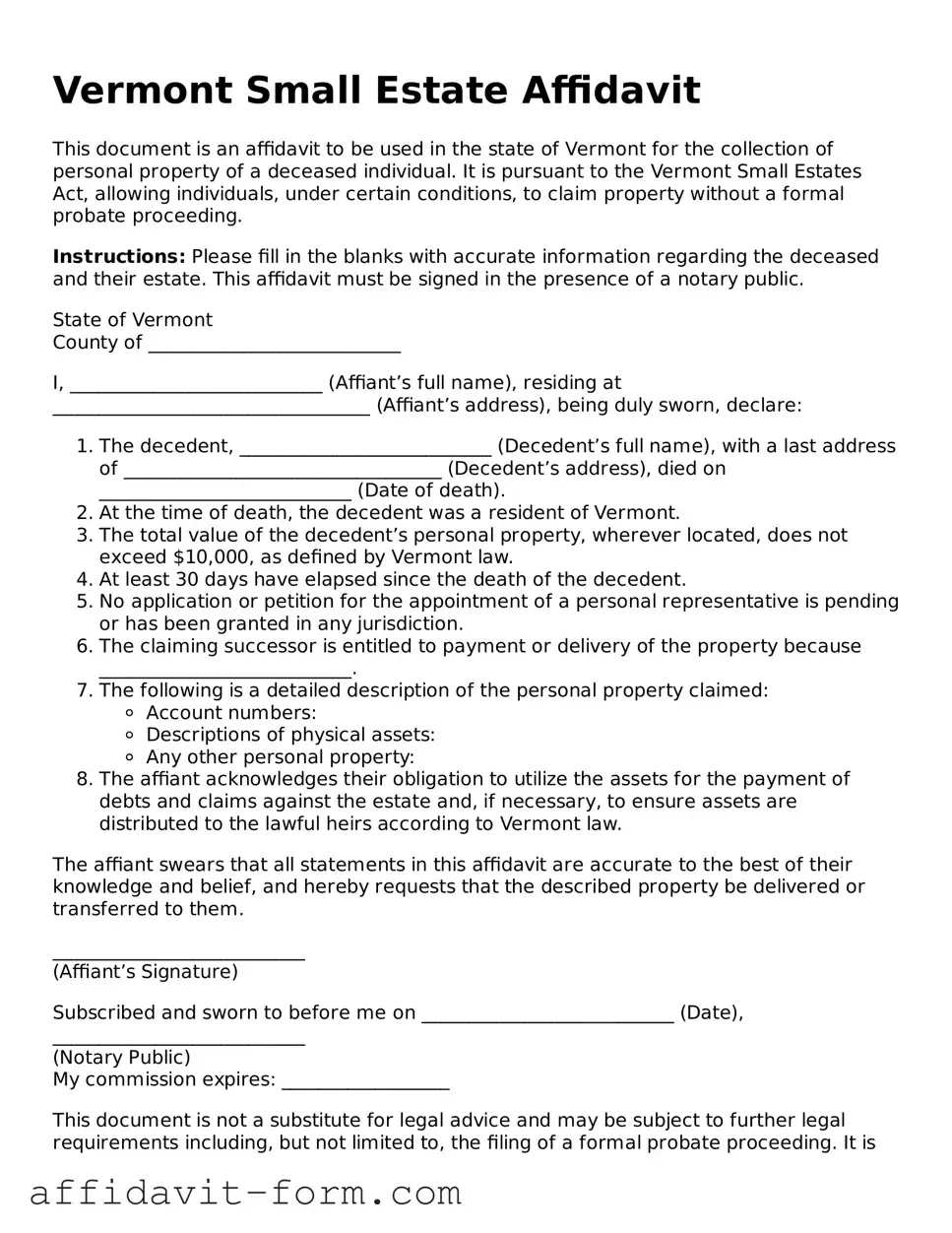What is a Vermont Small Estate Affidiff Process?
In Vermont, the small estate affidavit process is a simplified court procedure available for the estates of deceased persons that meet certain criteria. It allows the assets of the estate to be distributed without a full probate process, making it faster and less expensive for the beneficiaries.
Who is eligible to use the Vermont Small Estate Affidavit?
Eligibility for using a small estate affidavit in Vermont is generally determined by the total value of the estate’s assets. If the estate's total value, minus liens and encumbrances, does not exceed a specific threshold set by Vermont law, it may qualify as a small estate. Additionally, certain types of beneficiaries, such as surviving spouses or other close relatives, may have the right to use this affidavit under specific circumstances.
What assets can be transferred using a Small Estate Affidavit in Vermont?
The types of assets that can be transferred through a Vermont Small Estate Affidavit include personal property such as bank accounts, vehicles, and other tangible property that belonged to the deceased. Real estate cannot typically be transferred using this affidavit unless specific conditions are met, depending on Vermont’s current laws.
What is the value limit for a Small Estate Affidavit in Vermont?
The value limit for an estate to be considered small and thus eligible for the affidavit process in Vermont is subject to change. As of the most recent update, estates valued at $10,000 or less may qualify. It is important to consult the current Vermont statutes or a legal professional to confirm the most up-to-date threshold.
How does one file a Vermont Small Estate Affidavit?
To file a Small Estate Affidavit in Vermont, the following steps should be taken:
-
Confirm that the estate meets the criteria for a small estate in terms of total value and type of assets.
-
Obtain the Small Estate Affidavit form from the Vermont Probate Court or website.
-
Fill out the form accurately, including all required information about the deceased's assets.
-
Sign the affidavit in front of a notary public.
-
Submit the completed and notarized affidavit to the appropriate Vermont Probate Court, along with any required fees.
Are there any fees associated with filing a Small Estate Affidavit in Vermont?
Yes, there are filing fees associated with submitting a Small Estate Affidiff in Vermont. The amount of these fees can vary, so it's important to check with the local Probate Court for the most current fee schedule. In some cases, waivers or reductions may be available for individuals who cannot afford these fees.
How long does the Small Estate Affiavify process take in Vermont?
The timeframe for completing the small estate affidavit process in Vermont can vary depending on several factors, including the court's caseload and whether all paperwork is properly completed and filed. Generally, the process can be completed within a few weeks, but it may take longer in some circumstances.
Can real estate be transferred using a Small Estate Affidavit in Vermont?
Typically, real estate cannot be directly transferred using a Small Estate Affidavit in Vermont. However, exceptions may apply under certain conditions. For real estate and other more complex estate matters, consulting with a legal professional who is knowledgeable about Vermont estate law is strongly recommended.
